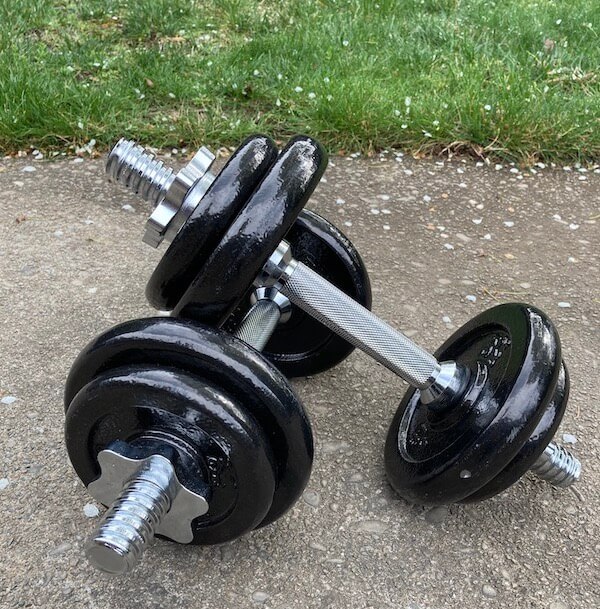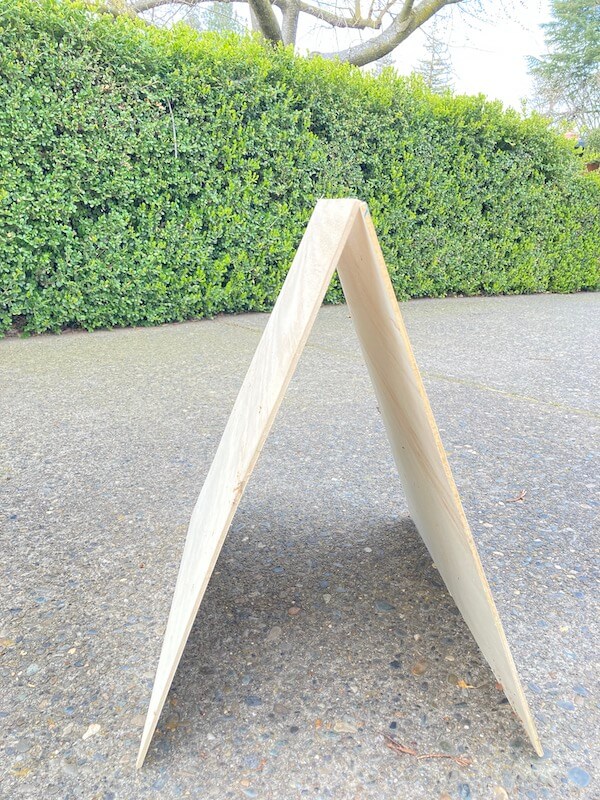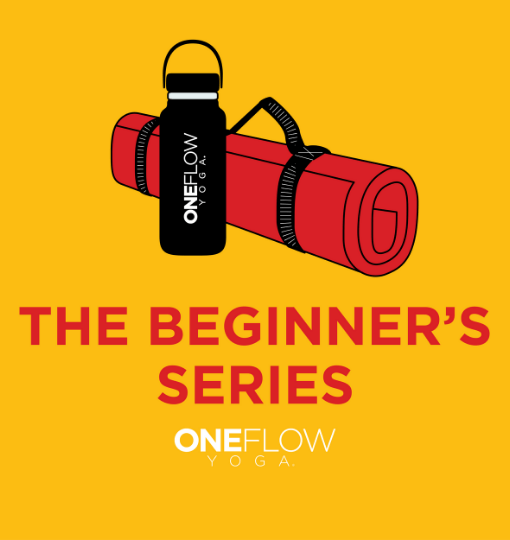People view yoga as an activity that can calm your mind and increase your flexibility. You may wonder, can it do more like help you create a lean, toned, and strong body? In other words, does yoga build strength?
Yoga is a strength-based practice. It excels at using your body weight to make you stronger and increase muscle tone. Unlike weight training regimes that isolate movements, yoga is a whole-body workout. It builds strength you can use in your everyday activities.
But, and here’s the caveat, you have to know, or study with a yoga teacher who knows, how to build strength with yoga. Yoga for strength is not something that’s regularly taught in yoga teacher trainings. It is only now beginning to be incorporated into the practice.
However, after reading this, you’ll better understand how to use yoga to get stronger.
Yoga To Build Strength
If yoga is so effective at building strength, why isn’t that well known?
First, flexibility gets a lot of the attention. People focus on the stretching aspect of the practice, similar to other disciplines like gymnastics and dance. However, in all three cases, strength is a foundational principle. Gymnasts, dancers, and yogins are incredibly strong.
Second, within the yoga community, alignment has steered the conversation. Alignment is the idea that postures should be done and even look a certain way. It’s why you see mirrors in some yoga studios so students can check their form.
Alignment stems mainly from one individual, BKS Iyengar, who, we can argue, has done more to popularize yoga in the modern sense than anyone else. Thousands of yoga teachers have been influenced by his book Light On Yoga. In our own teacher training, we use it because it codified the canon of modern postural practice.
But it’s not the only text we use because Iyengar lacked a scientific background. Light On Yoga is helpful for learning the general shape of the posture but not the underlying anatomy, physiology, and biomechanics that provide integrity.
And in matters of integrity, strength is fundamental.
Principles of Strength
Using your body to get stronger and build muscle is easier if you know a few basic principles. The first is load.
Load
A load is a force that is exerted on your body. The easiest way to understand this is to think of gravity as a force. You jump up, and gravity asserts itself and brings you back down. Before our physics friends write to me, I know gravity isn’t a force in the strict sense, but it helps for illustrative purposes.
You jump up, gravity acts, you come down. Gravity acts as a stressor on your body, and your body reacts to it so that you can move in the world. Your body looks the way it does in response to gravity. It’s why your feet have arches, and your back extensor muscles are so strong.

Why are loads important? Because changing the loads you are putting on your body is how you get stronger. We use the term applied loads for this purpose.
Loads can be external, such as when you lift a barbell or yoga block, or they can be internal, as when you generate muscular effort to create resistance.
Adaptation
To get stronger, you have to increase the amount of load you regularly encounter. Loads stress your body, and your body responds to meet the demands. When this happens repeatedly over time we call it adaptation.
Adaptation is why loads vary by person. If you deliver bottled water for a living, you are used to hoisting 5 gallons of water, weighing 40 pounds each. Lifting a 20lb barbell to your shoulder isn’t going to be a big ask.
But if all you regularly raise are the letters you get in the mail, 5 lbs will be significant.
Because loads vary by individual, we can now understand why there is no single perfect pose or movement for everyone. It’s based on how you use your body, despite genetics.
What would benefit everyone is to seek out an optimal load. I speak to this a lot in class when I use the phrase, “if it’s appropriate.” I am inviting you to engage and question if what is being asked is optimal for you. To answer, you need to observe, pay attention, and act, the very heart of what yoga is about.
An optimal load is not overloading too much nor underloading. Underload by doing less than you usually do, and your muscles will atrophy and weaken. Overload, by definition, is going beyond your normal. But, go overboard with overload, and you risk injury. You’re looking for the sweet spot in between. Over time your body will adapt to that increased load, and it will become your new normal.
With this in mind, we can see why fixed sequence types of yoga, such as ashtanga and Bikram, can only take you so far in strength. Fixed means the sequence is the same every time. Once your body adapts to a particular sequence, it can only maintain strength, not build it further.

Progression
The golden rule of loading is called progressive overload. It’s where you add loads progressively, over time, giving your body the chance to respond and acclimate before moving on.
Progression is easy to conceptualize in weight training. You start with a 5 lb weight and lift it for a specific period before moving up to a heavier weight.
The same holds true for yoga. You want slow and steady gains.
But how can you change the amount of stress on your body without changing the yoga pose? We do this by adjusting the load parameters, such as duration and frequency.
For instance, if we increase the time in a posture, duration, from 1 breath to 5, your body will have to get stronger to stay there longer. The same goes for frequency, as when you go from doing chaturanga 3 times a class to 10 times,
When I teach new yoga teachers, I always advise them to scale the difficulty of the work, i.e., the stressor, to 1 unit beyond where people are now. It’s not a mathematical equation but is a place where students will find it difficult but possible. Possible only means that in a short time, practitioners can see themselves doing the posture.
What I’m sharing with you is radical for yoga. Many classes don’t offer a sufficient challenge to stimulate muscle growth on an ongoing basis. And practices like power yoga can overwhelm students if the teacher isn’t regulating the difficulty or worse. Students might respond to the challenge by finding shortcuts, like using momentum instead of gaining strength.

Yoga vs. Weight Training
In weight training, it’s common to isolate muscles to work them. Weight lifters speak of their time at the gym as “back and bis,” “chest and tris,” or “leg” day.
Vinyasa yoga, by contrast, is a full-body workout each time you practice. The strength you build doing asana, physical postures, translates well into everyday life. If you want to learn more about asana, click here.
While the odds are you never have a reason to raise a 150 lb bar over your head, like in weight training’s clean and jerk, you will bend, twist and reach in all kinds of directions, as you do in yoga.
Yoga falls into a category known as functional fitness, meaning you are using multiple joints and muscles simultaneously in ways that apply to your everyday life.
Asana does have limitations in how much you can progress. But, the limit is your own body weight. Going further than that would necessitate external forces that free weights can provide.
Also, to get the most out of yoga for strength, you need to understand the science and be creative in structuring progressions and applying forces. This is something more geared for yoga teachers.
As an average yoga practitioner, you can build a strong, capable body with yoga.
That’s not to discount weight training. With it, you can adjust the load with precision. And it’s easier to back off intensity and work to the point of fatigue. You can do the latter with yoga, but it takes more skill.
Benefits of Getting Stronger w/ Yoga
When you practice yoga you get both mobility and stability. Stable is another way to think of integrity or strength. It’s the ability to resist forces and change, typically in the form of an isometric contraction. You do this when you hold a pose and at the same time try to move without moving. Though nothing appears to be happening to the outside observer, inside, you know you’re working hard to maintain the shape.
Technically, this uses Newton’s third law of motion; for every action, there is an equal and opposite reaction. Yes, to teach yoga well, it helps to know physics.
Choosing to practice yoga to build strength lessens your chance of injury that might come from lifting weights.
And yoga needs minimal equipment.
Famed bodybuilder Arnold Schwarzenegger apparently had a trailer solely for his weights when he was on set filming movies. While you don’t need that, a basic garage set-up has a bench, a bar, and assorted weights. For yoga you need a mat. But do splurge and get a good set of blocks, too, because you’ll be able to use them when progressing your practice.
So if yoga is new to the strength-building business, how can you make minor changes that will significantly affect your practice? Below are 6 tips to keep in mind to get strong.
6 Ways To Build Strength With Yoga
1 Overload Beyond Your Normal
Use the principle of progressive overload by adjusting the work you are doing, so it is difficult but doable. You don’t have to go to an extreme. Just increase the intensity of your effort, so it is higher than your normal workload.
2 Modify The Postures
Modifications are adjustments to the “final form” of the posture. The final form is defined by Light On Yoga by BKS Iyengar, who focused on alignment. However, alignment can be more aesthetically based rather than functional.
Modifications adjust the form of the posture to make it doable for you. For example, you might lower the back knee to the ground in a lunge posture to build strength.
However, you can use modifications to add more difficulty beyond the standard form of the posture. An example of this is when you go from two-legged utkatasana, fierce pose, to one-legged.
Finally, you can start with one form of the posture and downscale it to keep working at 80% of your effort. You might start in a high lunge position, start getting fatigued, so lower the back knee to keep working at a consistent level of effort.
3 Slow Down Your Movements
To go fast, go slow. This isn’t slow for slow’s sake, but to emphasize control through a range of motion.
Going slow can help highlight areas of weakness for you because they’ll be where you want to rush. Chaturanga dandasana, four-limb staff pose, is a classic example of going fast because we lack the strength to hold it. To test if you are relying on momentum, take a pause at the bottom of chaturanga and see if you can keep it stable.
Going slow will also allow you to use proper form in the integrity sense. This means you are using strength to hold the pose rather than physics. When you lean two boards against one another, they stay up because they are leaning against one another, not because they generate any compensatory force.

4 Engage For Internal Resistance
Engaging is the definition of yoga. In this case, it means activating your body to do the work of the posture. Generally, this is muscle engagement to create internal resistance to the shape of the pose.
How much you engage and the degree of intensity is up to you. It’s a spectrum you can amp up and down. If strength is your primary objective, put in enough effort so that you can only stay there for the length the teacher offers. This is typically 5 breaths in vinyasa yoga. But what if you can remain in the same pose for 5 minutes? In that case, it’s an indication there isn’t enough challenge, either externally or internally, to stimulate muscle growth.
Engagement is a way skilled yoga practitioners use to adjust the effort without changing the posture.
5 Balance Strength, Stretch & Co-Contractions
Seeks to marry strength with stretch. When you stretch your hamstrings, you also want them to resist the stretch by trying to contract. In parsvottanasana, intense side stretch pose, energetically slide the back heel back to turn on the hamstrings as you fold forward.
You can also balance the agonist and antagonist muscles’ contractions, aka a co-contraction that will help bring stability to your movements. Stability requires strength. Teachers cue this when they say, “hug your muscles to the bone”.
6 Vary To Create Novelty
Because your body adapts to the loads you put on it, you need to vary what you do to build strength. Repeating sequences, again and again, helps you maintain your gains, but will not develop them further.
To get stronger, you are going to need the novelty you get when you change things up. Change can look like the time in a posture, intensity of effort, changing hand positions, or a myriad of ways.
As a bonus, this helps prevent injuries from repetitive motion.



